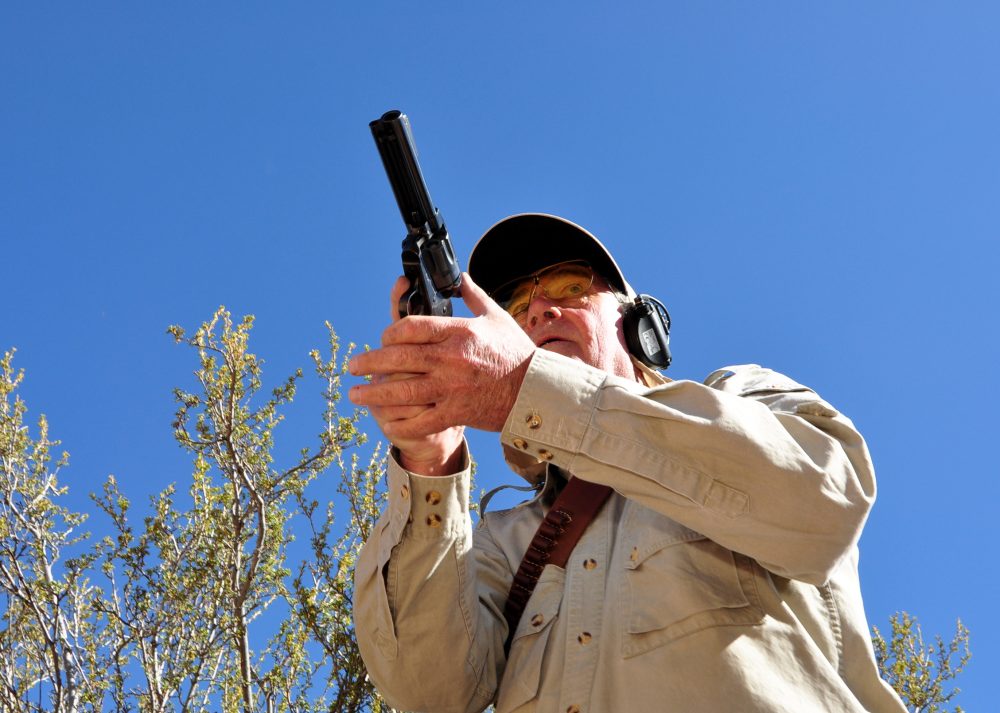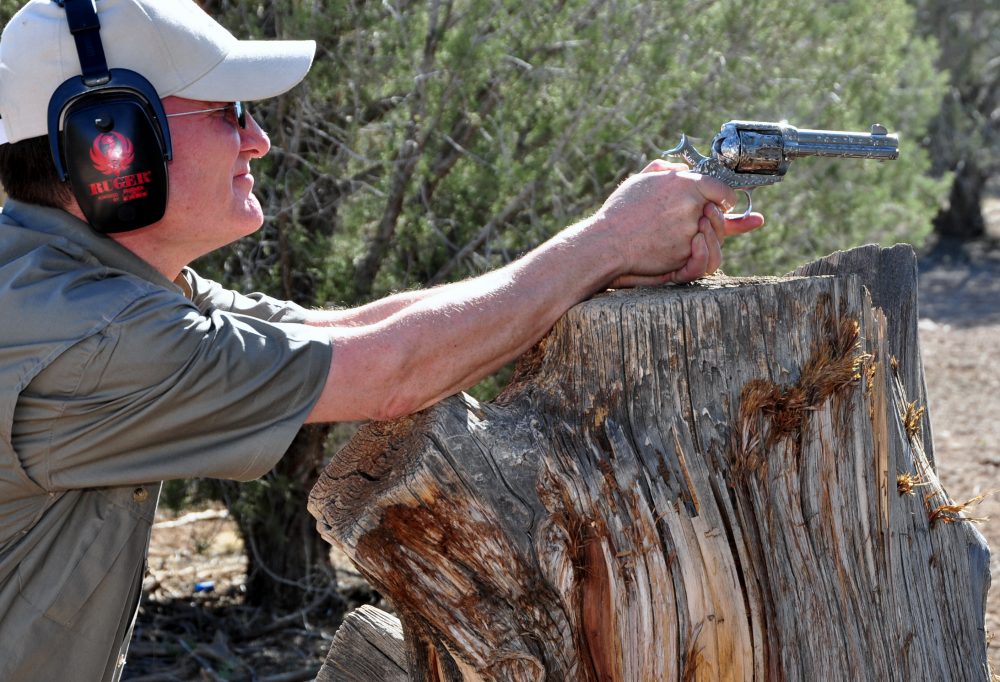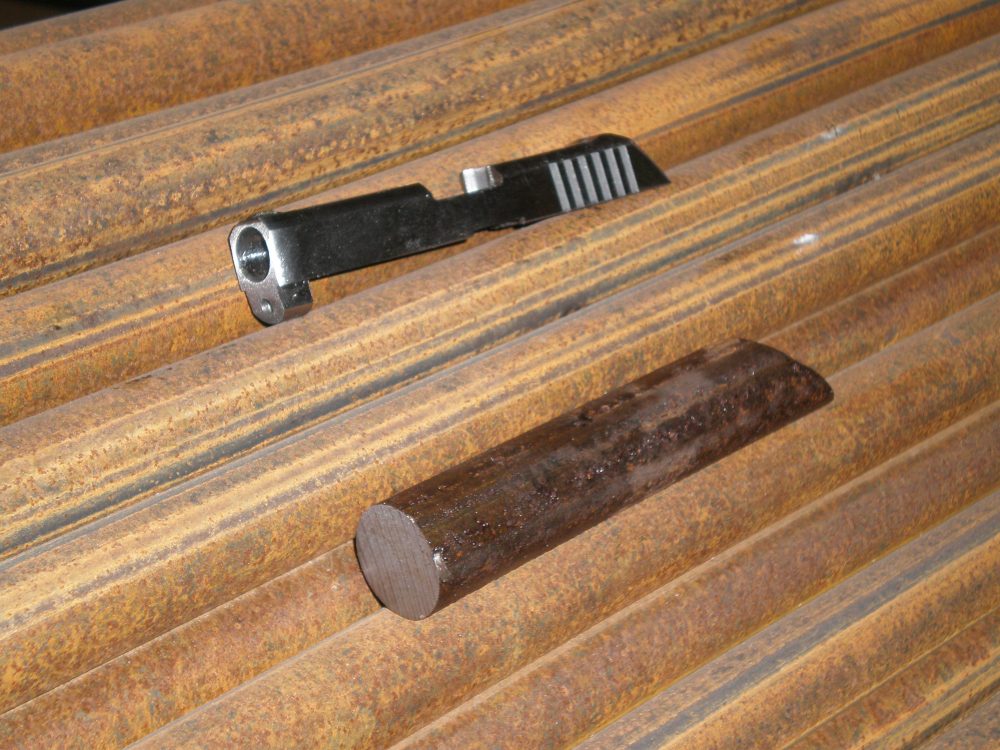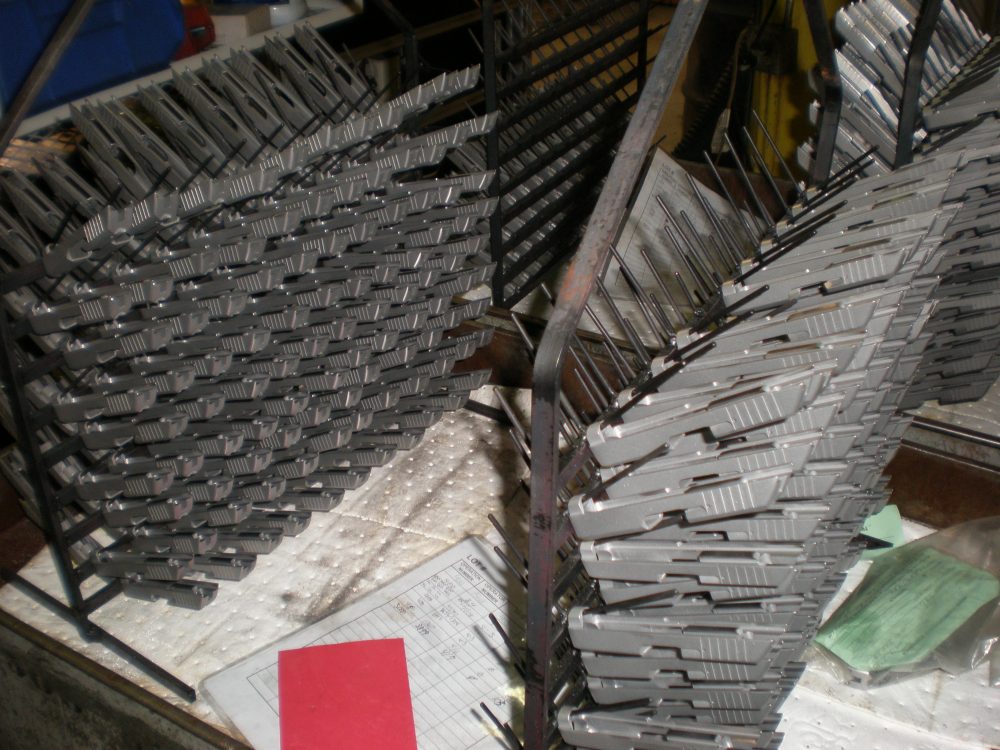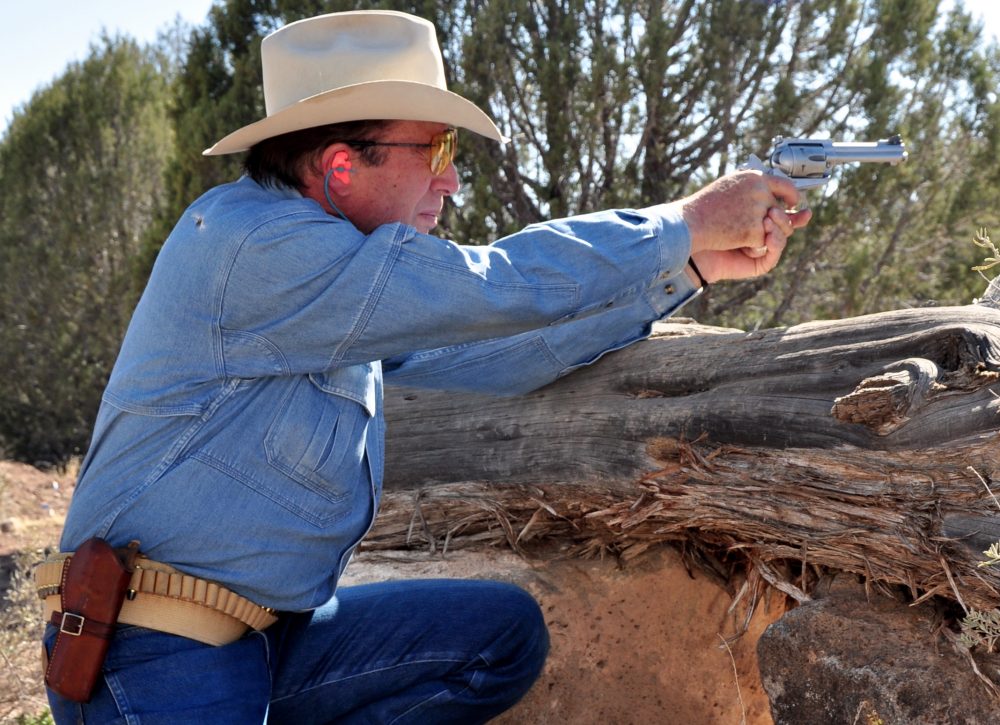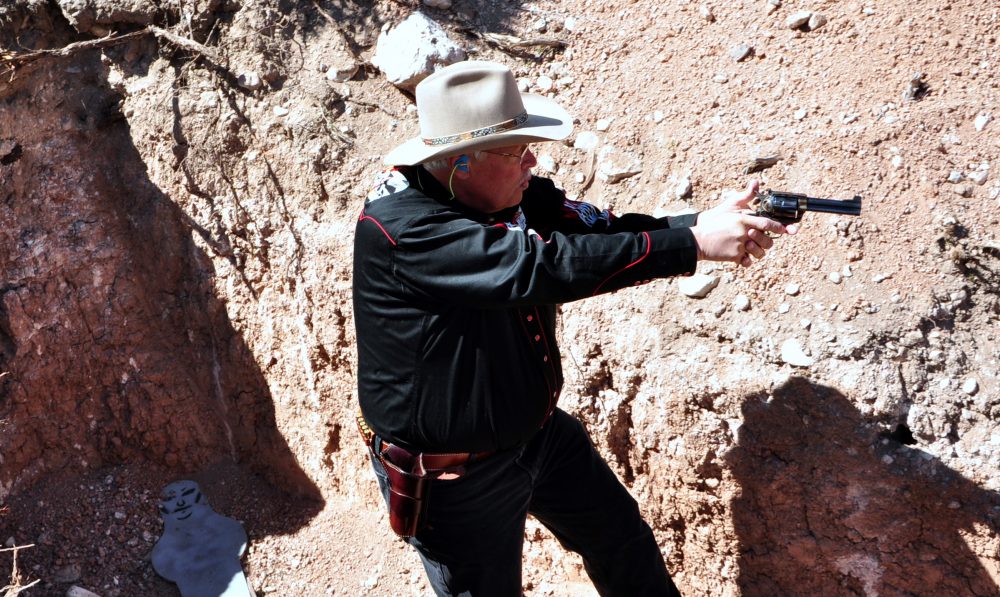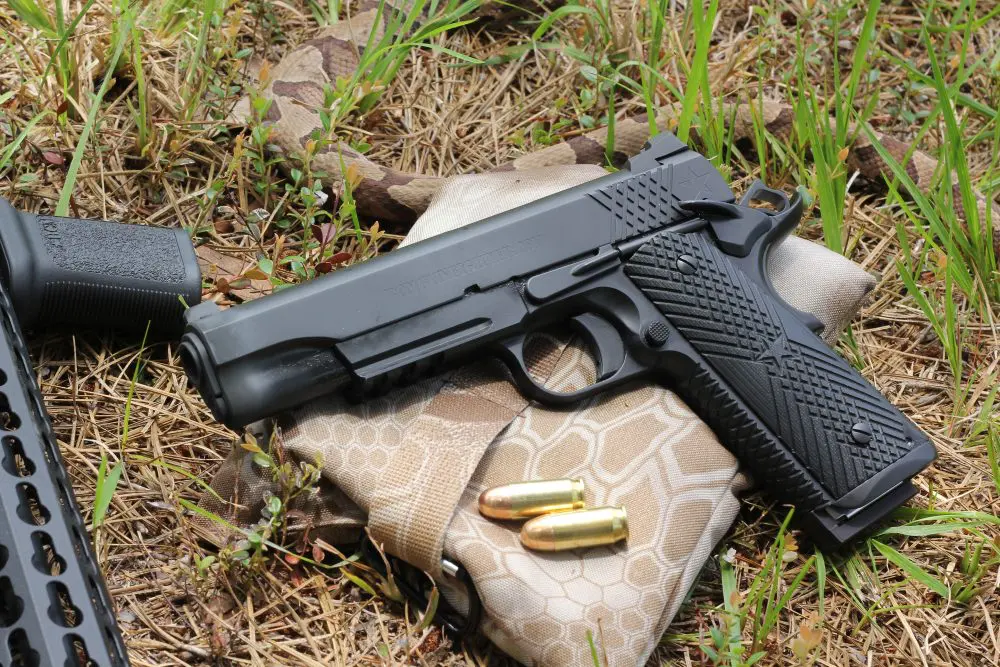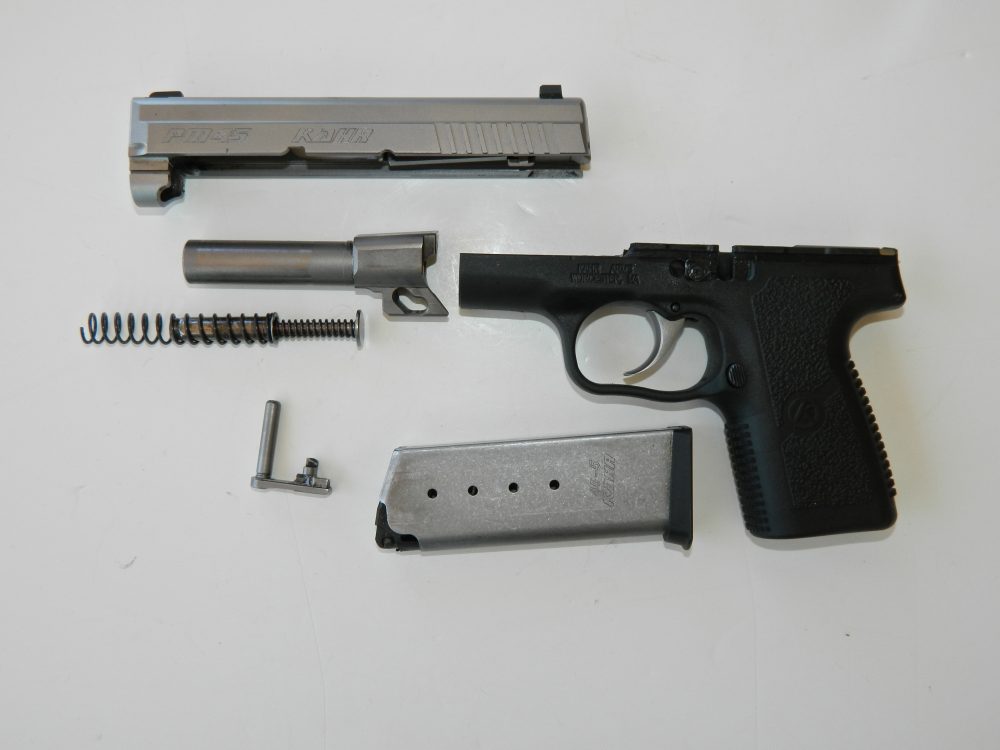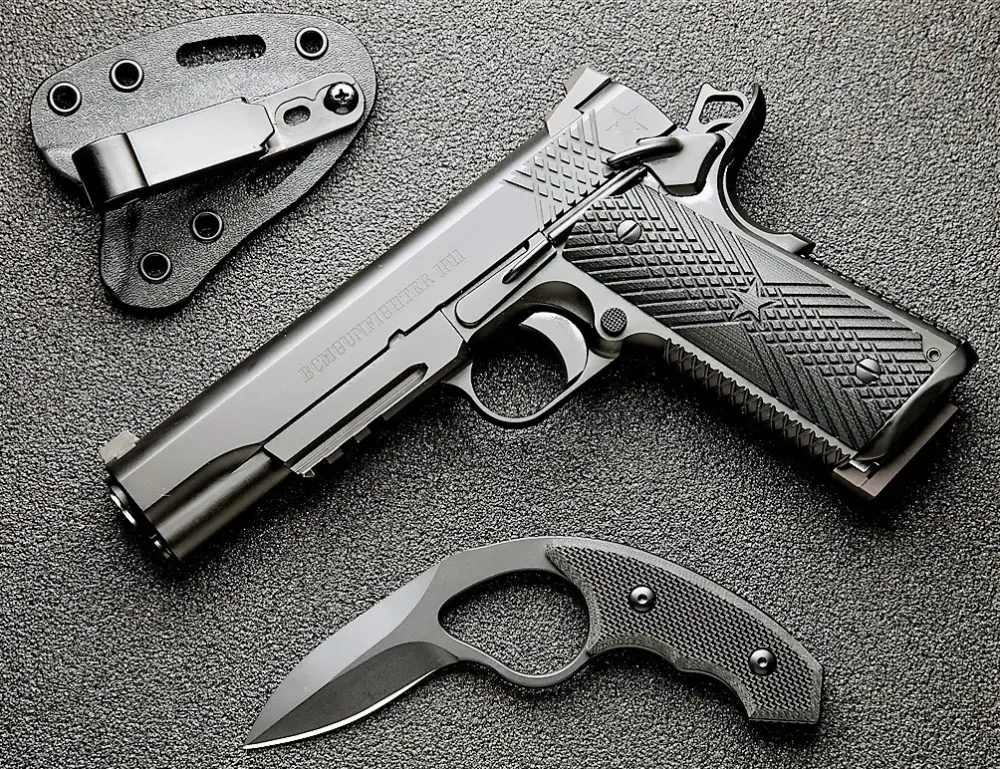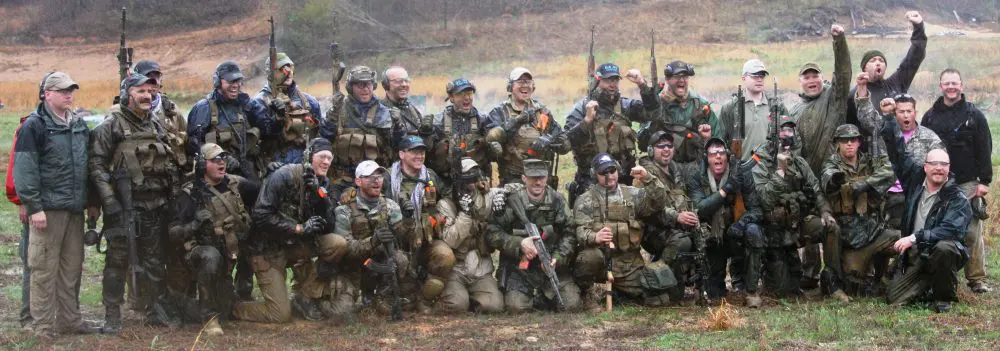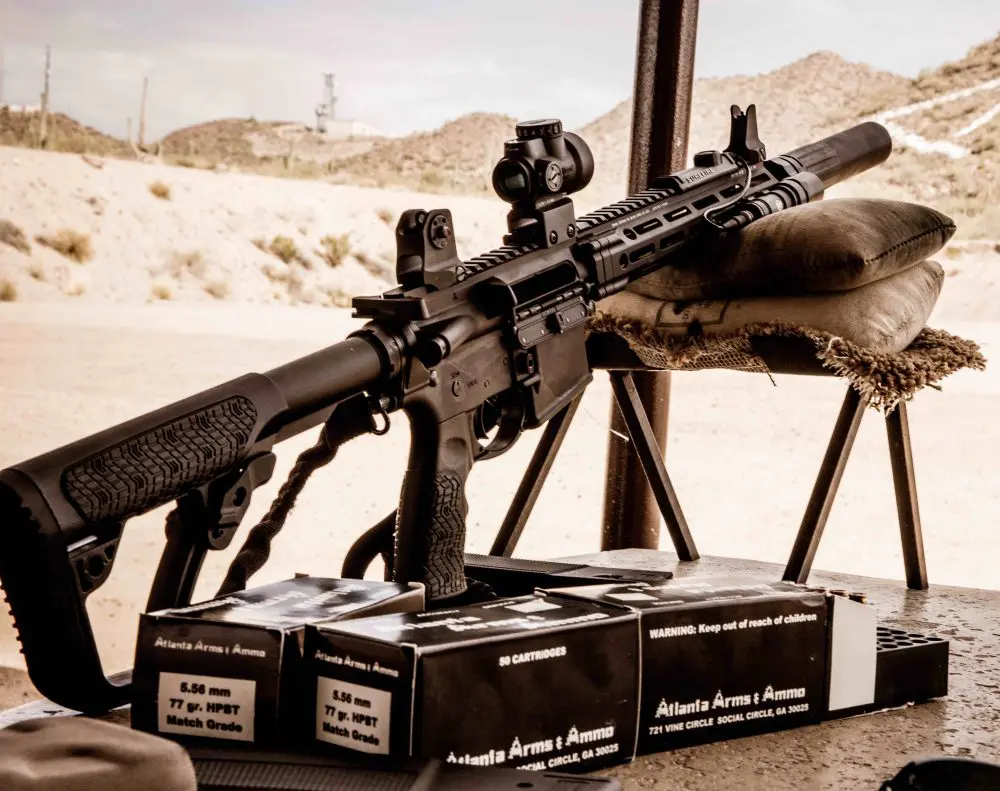Gunsite Instructor Larry Mudgett demonstrates correct grip technique with single-action revolver.
Over the years I have attended numerous “tactical” firearm courses. With the exception of shotgun courses, the firearms I employed were modern semiautomatics, usually fed with high-capacity magazines.
Recently, however, I attended a basic handgun course at Gunsite that was sponsored by Hornady, Ruger, Surefire and XS Sights. The handguns that were used in the course were various models of single-action Ruger revolvers in calibers ranging from .38 Special to .45 Colt. Ruger also brought along their new LCR .38 revolver for anyone who wanted to give it a try.
More or less a prototype, the lesson plan was roughly based on Gunsite’s Defensive Revolver course. If there is enough interest, Gunsite may add it to their regular curriculum.
The class was made up of authors and industry professionals from the sponsors. Representing Ruger were Ruger CEO Mike Fifer and Ken Jorgensen. SureFire was represented by Dick Williams and Ron Canfield, and XS Sights by Dave Bigger. Unfortunately, Steve Hornady was unable to attend due to other obligations. It is always great to see people who manufacture products on the firing line and be able to receive feedback from shooters on what works and what may be improved on.
Dick Williams of SureFire hunts for targets in outdoor simulator.
You are probably asking the same question I was at the beginning of the course: “With quality semi-autos and double-action revolvers readily available to almost any qualified individual, why bother with a design that’s remained basically unchanged for 136 years (Ruger being a notable exception), holds only six rounds, and is slow to load and unload?”
One person opined that “We should learn to use it because it may be all that we have left in a few years.” I refuse to agree with such defeatist thinking. The time for compromising our inalienable rights is long since past.
The lead instructor for the course, Larry Mudgett, explained that many individuals are involved in Cowboy Action Shooting, expending thousands of rounds in practice and matches each year. Additionally, many people hunt/practice with single-action revolvers.
Using the old thumb-cocker with such regularity, it may make more sense for them to go with a gun that they are intimately familiar with in a self-defense situation as opposed to a handgun they only fire a few times a year. As the final outcome of most self-defense situations can be attributed more to the operator than to the tool used, that makes sense.
Ruger CEO Mike Fifer takes aim on distant target at The Scrambler.
After a short classroom session on safety and nomenclature, the class reformed at the firing range.
In the way of equipment, I used a Ruger stainless Vaquero with a 4 5/8-inch barrel chambered for .45 Colt. My leather gear was a Ross Leather holster/gun belt rig. I fed the Vaquero with Hornady 225-gr. FTX LEVERevolution ammo provided by Hornady for the course.
Larry Mudgett demonstrated the presentation (drawstroke) for the single-action revolver, which is slightly different than that for a semi-auto. One difference is the initial grip on the handgun. With a semi-auto, the social, ring and pinkie fingers are wrapped around the stocks. With a single-action, the pinkie finger is placed under the frame to prevent the revolver from rolling up in the hand when it is cocked.
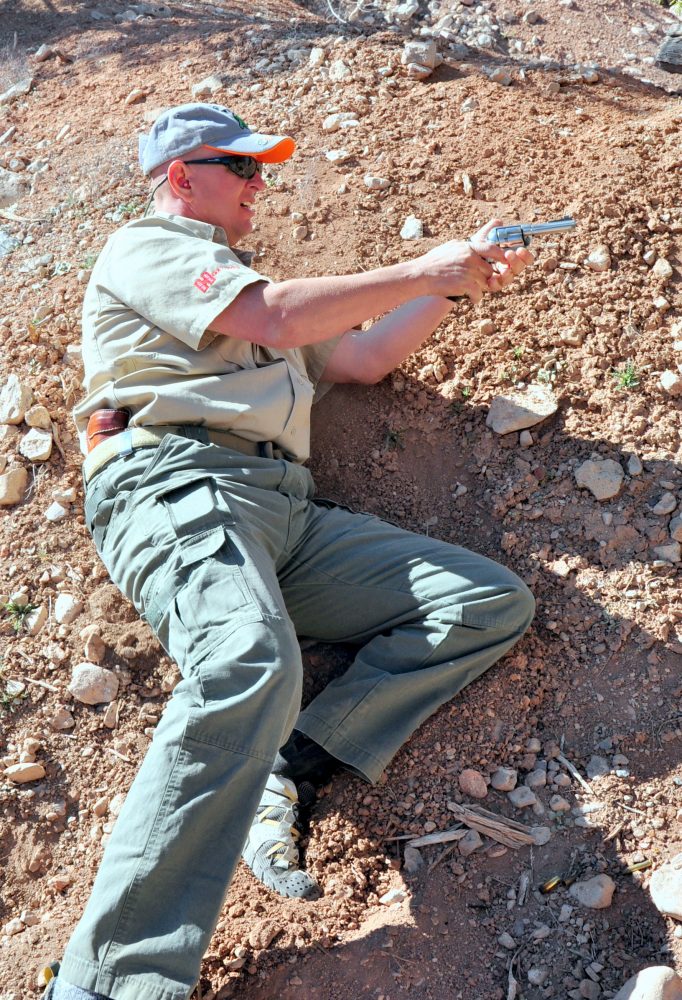
The two-handed grip is also different than normal, as the left thumb is off the weapon and the other hand, and positioned upwards. This leaves the thumb in position to quickly recock the revolver with the weak hand, which is faster than using the strong-hand thumb and also leaves the strong hand with a firing grip.
Under Mudgett’s watchful eye, the class performed numerous repetitions of the presentation with unloaded weapons.
Once the class “went hot,” we frequently performed ball and dummy drills.
With an auto pistol, these drills are performed by placing a dummy round somewhere in the magazine. Not knowing when it will come up will show if a shooter is anticipating the shot and following through. If he is anticipating the shot and not following through, it will be revealed by a noticeable flinch.
To accomplish the drill with the single-action guns, we would fire one, two or three rounds without reloading, spin the cylinder and continue. If the hammer fell on an expended cartridge, shooters were encouraged to say “good press” or “bad press” aloud to emphasize that they were (or were not) following though.
Since the single-action is slow to reload, the class was encouraged to load it in the same fashion as a pump shotgun—that is to keep the weapon topped off using the principle of shoot one, load one; shoot two, load two, etc.
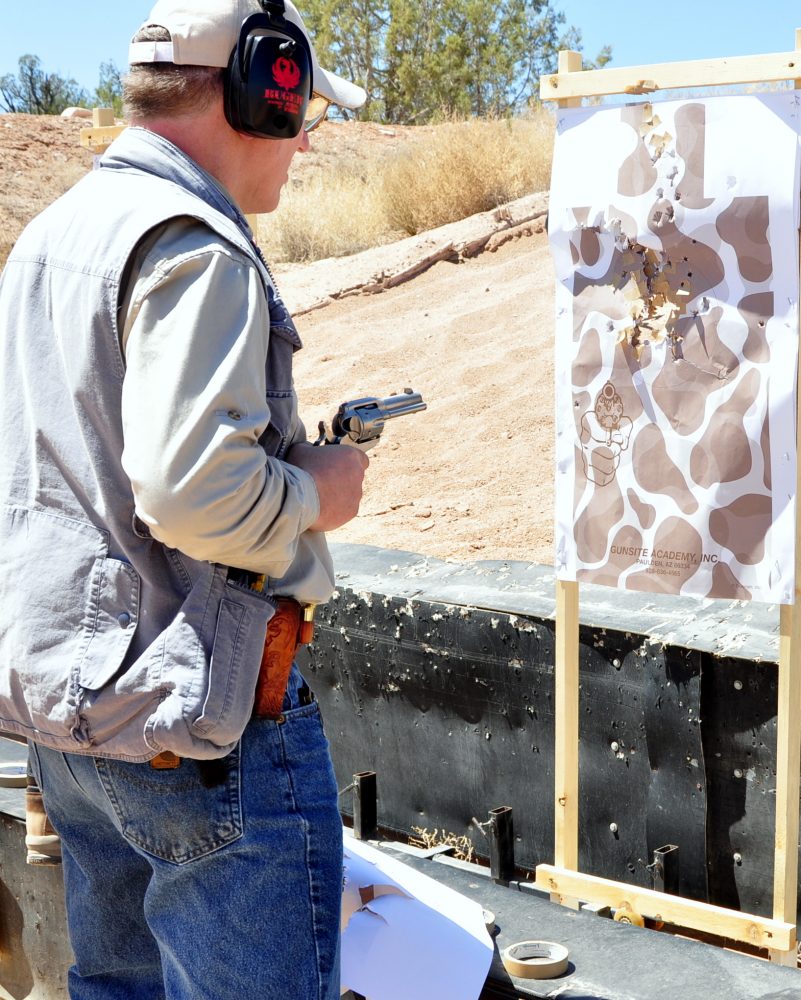
If a single shot was fired without recocking the revolver, the loading gate would be opened, the cylinder turned clockwise, the empty round ejected and a fresh round inserted. If two shots were fired, it was simply a matter of opening the loading gate, ejecting a fired cartridge, inserting a loaded round, turning the cylinder and unloading/loading as above. If three shots were fired, the gun would be reloaded as if two rounds had been fired, and then turn the cylinder three more “clicks” to arrive at the first round fired.
The procedure sounds more complicated than it is in practice, and the entire class was able to keep the guns running with little or no problem.
Most of the shooting occurred at relatively close range, not going any farther back than 15 yards. Since this class, as mentioned earlier, was a prototype and the emphasis was on learning to run the guns, no positional shooting was done.
We did, however, shoot with the strong hand only and the weak hand only. We also executed close quarters shooting from the weapon retention cocking position using only the strong hand. From this position, the initial grip on the pistol did not have the pinkie finger under the frame, allowing the gun to roll up in the hand and enabling it to be more easily cocked with the strong-side thumb.
The morning of the second day, the class met at Ruger’s Prescott, Arizona, plant—where Ruger semi-auto pistols are manufactured—and given a tour of the facility. The class was able to see firsthand all the operations that go into manufacturing a Ruger pistol—from slides being manufactured from raw bar stock, to final assembly, test firing, and shipping.
Slide for Ruger LCP starts out (top) as solid piece of bar stock (bottom).
The Ruger LCP .380 pistol is often my first choice as a second gun. In some situations, depending on my clothing, it is my primary, and so it was a treat to see the many steps of careful manufacture that go into it before it reaches the end user’s hands.
The second day concluded with more square range practice, but the speed of shooting and reloading was ratcheted up a few notches. Before concluding the range session, we were told that we would be shooting in the outdoor simulators the next day.
Regardless of weapon type, situational awareness is paramount in any deadly force situation. Of equal importance is manipulation of the weapon system. When one’s eyes can be kept downrange, reloading a semi-auto pistol is relatively simple using the hand-finds-hand principle with a fresh magazine. It is more difficult with a double-action revolver and can be much more difficult with a single-action—it’s more like hand finds hand, finds loading gate, finds ejector rod, finds fresh cartridge, finds chamber.
Racks of Ruger LCP slides ready for final finishing.
Trying to bring as much realism to the course as possible, I spent a little over an hour that evening practicing unloading and reloading from my belt loops with my eyes closed. (Of course, I removed all live .45 Colt rounds from the area and used dummy rounds for the exercise.)
The last day of the course started out with students warming up on the square range, and then the class was divided and sent to two different outdoor simulators, with Larry Mudgett running one and Gunsite coach Il Ling New running the second.
Jim Wilson takes careful aim from kneeling position at The Scrambler outdoor simulator.
It is never a good idea to proceed deeper into a simulator with a partially loaded gun any more than it is combating bad guys in real life. With that in mind, and due to the type of weapon being used, I changed my tactics from previous occasions in the outdoor simulators at Gunsite. Rather than a quick tac load or speed load—basically out in the open—I took advantage of any available cover to reload the one or two rounds expended. Thanks to the previous days on the square range and my improvised blind practice the night before, I was able to reload the Vaquero, maintain good situational awareness downrange and get back into the fight very quickly.
Is the single-action revolver a good choice for everyone? Of course not, and I have no plans to give up my 1911s. However, for those who spend more time with the Peacemaker-type revolver than other handguns, learning how to run it efficiently is a must.
Michael Bane of The Outdoor Channel works problem in outdoor simulator.
SOURCES:
Gunsite
Dept. S.W.A.T.
2900 W. Gunsite Rd.
Paulden, AZ 86334
(928) 636-4565
www.gunsite.com
Hornady Mfg. Co.
Dept. S.W.A.T.
Box 1848
Grand Island, NE 68802-1848
(800) 338-3220
www.hornady.com
Sturm, Ruger & Co., Inc.
Dept. S.W.A.T.
200 Ruger Road
Prescott, AZ 86301
(928) 778-6555
www.ruger-firearms.com
SureFire, LLC
Dept. S.W.A.T.
18300 Mount Baldy Circle
Fountain Valley, CA 92708
(800) 828-8809
www.surefire.com
XS Sight Systems Inc.
Dept. S.W.A.T.
2401 Ludelle
Fort Worth, TX 76105
(800) 734-7939
www.xssights.com


